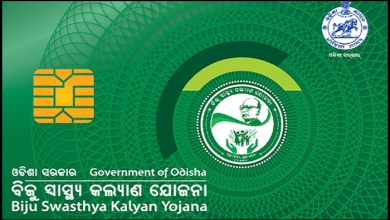Pradhan Mantri Fasal Bima Yojana : Objectives, Benefits, and How to Apply
According to the Economic Survey 2021–22, India’s economy depends so heavily on agriculture that it contributes about 18% of its gross value added (GVA). Crops are therefore a valuable resource for the nation as a whole as well as for the farmers who grow them. Under the Pradhan Mantri Fasal Bima Yojana, which covers a variety of risks related to farming, farmers can insure this asset. The main aspects of this government program are highlighted in the following article.
What is PMFBY ( Pradhan Mantri Fasal Bima Yojana)?
In India, the government-backed PMFBY (Pradhan Mantri Fasal Bima Yojana) crop insurance program seeks to shield farmers financially from crop loss brought on by pests, illnesses, and natural catastrophes. The Ministry of Agriculture and Farmers’ Welfare introduced the program in 2016, and a network of banks and insurance providers carry it out. With coverage for more than 50 crops and more than 50 crore farmers, it is the biggest agricultural insurance program in the world.
Objectives of PMFBY
Offering farmers financial insurance against crop loss from pests, illnesses, and natural disasters is one of PMFBY’s primary goals. Due to a lack of funding, Indian farmers have historically had difficulty recovering from crop failures, which has resulted in debt and poverty. By paying farmers for the loss of their crops, PMFBY seeks to give them a safety net and lower their chance of going bankrupt.
PMFBY places great importance on promoting the use of contemporary farming methods and equipment. In order to improve agricultural yields and lower the risk of crop loss, the program incentivizes farmers to diversify their crop portfolios and implement innovative practices like precision farming by offering insurance coverage for a broad range of crops. Consequently, this could further enhance the general growth of India’s agriculture industry.
Apart from these goals, PMFBY also seeks to lessen the cost of crop insurance premiums for farmers. In an effort to make the program more accessible to farmers, the government subsidizes a portion of the premium in order to do this. In cases where farmers are unable to cover the premium, the government offers a full subsidy.
Eligibility for PMFBY (Pradhan Mantri Fasal Bima Yojana)
Qualifications for the Pradhan Mantri Fasal Bima Yojana (PMFBY)
Farmers must fulfill several requirements in order to be eligible for coverage under the Pradhan Mantri Fasal Bima Yojana (PMFBY). Here’s a list to help you with it.
- On the insured land, the farmer must work as a cultivator or a sharecropper.
- A legitimate land tenancy agreement or a genuine and validated land ownership certificate are required for farmers.
- It is required that the farmer applied for insurance coverage within the allotted time, usually two weeks after the planting season began.
- They cannot have gotten payment from another source for the same crop loss.
- They must receive a Kisan Credit Card (KCC) within six months after enrolling, or they must already have a valid KCC.
- At the time of enrollment, the farmer must present proof of valid identification and have a current bank account.
Farmers might also need to fulfill other requirements in order to be qualified for coverage. For instance, they might have to have utilized approved seeds and other inputs or have a minimum amount of land under cultivation.
Note: The requirements for PMFBY eligibility may change based on the particular terms and conditions of the insurance policy. For further information on the precise qualifying requirements that apply to the policy, do speak with the authorities.
Coverage and premiums under PMFBY
The coverage and premiums under PMFBY are listed below.
- Crop insurance is offered by the Pradhan Mantri Fasal Bima Yojana (PMFBY) for a number of crops, including horticulture crops, cotton, sugarcane, pulses, oilseeds, and cereals. Depending on the state in which the policy is being implemented, various states may have more commonly grown crops, hence the precise yields covered under PMFBY may differ.
- Farmers are protected by PMFBY against crop loss resulting from a variety of hazards, such as pests and diseases, natural catastrophes including drought, flood, and cyclone, and more. The average crop output, as established by a set of government-conducted crop-cutting experiments (CCEs), is the basis for the insurance coverage offered by PMFBY.
- The average crop production multiplied by the area under cultivation and the crop’s minimum support price (MSP) yields the sum insured.\
- The kind of crop and the area in which it is grown determine the sliding scale premiums for insurance coverage under PMFBY. The Pradhan Mantri Fasal Bima Yojana premium is displayed in the following table.
|
Crop type |
Premium |
|---|---|
|
Kharif |
2% of the sum insured |
|
Rabi |
1.5% of the sum insured |
|
Kharif and Rabi |
5% of the sum insured |
- For small and marginal farmers, the government subsidizes a portion of the premiums; the farmers are responsible for paying the remaining amount.
- Additionally, the government covers all of the premium for farmers in Jammu and Kashmir and Himachal Pradesh, two states in Northeastern India.
It is important to note that PMFBY does not cover losses brought on by farmer default or negligence, such as when seeds or inputs are not used as approved.
How are claims processed under PMFBY
The Pradhan Mantri Fasal Bima Yojana (PMFBY) claim procedure is intended to give farmers a prompt and effective means of getting compensation for crop loss. Low claim settlement ratios have, however, presented difficulties in the past, resulting in delays and discontent with the program. The government has put in place a variety of initiatives to expedite the claims procedure in order to overcome these problems. This is how the Pradhan Mantri Fasal Bima Yojana claims procedure operates.
1. Intimate the insurer
Farmers who suffer a loss to their crops are obliged to notify the insurance provider of the loss as soon as possible—typically, within 72 hours of the loss occurring.
2. Submit the documents
Supporting documentation, such as images of the harmed crop and a report verifying the magnitude of the loss from the agriculture department or village-level committee (VLC), must be submitted with the claim.
3. Assessment and payout
Following the filing of the claim, the insurance provider will evaluate it in accordance with the terms and conditions of the policy as well as the severity of the crop loss. The insurance company will pay the farmer a compensation to make up for the crop loss if the claim is accepted.
Farmers can make a complaint with the government-established grievance cell if they are unhappy with the outcome of their claim or if there are any problems with the claims process. PMFBY-related concerns must be handled and resolved by the grievance cell.
To guarantee that their claim is handled efficiently, farmers should be aware of the terms and conditions of their insurance policy and follow the instructions when submitting a claim.
Advantages of Pradhan Mantri Fasal Bima Yojana (PMFBY)
The Pradhan Mantri Fasal Bima Yojana (PMFBY) has the following benefits.
1. Wide coverage
A vast variety of crops are covered by PMFBY, such as oilseeds, horticultural crops, food grains, plants, and plantation and annual commercial and non-commercial crops. This implies that the program will assist a sizable number of farmers nationwide.
2. Affordable premiums
With the premium rate for most crops being under 2% for kharif crops and 1.5% for rabi crops, PMFBY offers farmers cheap premiums. This makes it possible for many farmers, including those with little financial means, to obtain the insurance.
3. Quick claim settlement
Within thirty days on the date of loss notification, claims are supposed to be settled under the system. This makes it possible for farmers to recover from crop loss and carry on with their farming operations by ensuring they can acquire the financial support they require on time.
4. Use of technology
PMFBY employs technology to make the insurance process more transparent and efficient. To minimize the time and effort needed to process claims, the program, for instance, uses satellite data to evaluate crop damage and compute claims.
5. Risk management
PMFBY assists farmers in mitigating the hazards that come with farming, like crop failure brought on by pests or natural calamities. The program helps farmers preserve their livelihoods and guarantee the sustainability of their farming operations by offering cash support in the event of crop loss.
BENEFITS OF PRADHAN MANTRI FASAL BIMA YOJANA (PMFBY)
Reduced Premium Contributions:
Farmers’ financial burden is greatly lessened by PMFBY’s decreased premium rates. Insurance is more reasonably priced when farmers contribute just 2% for Kharif crops, 1.5% for Rabi crops, and 5% for annual and commercial crops.
individualized Loss Assessment:
The plan enables customized loss assessment, particularly for regional hazards like landslides, floods, and hailstorms. This guarantees just recompense according to the particular losses suffered by every farmer.
Plot-Based Yield Loss Assessment:
For cyclones, cyclonic rains, and unseasonal rains in India, PMFBY allows yield loss estimate on a per-plot basis. It provides correct compensation by covering damage to harvested crops left in the field for drying for up to 14 days after harvest.
Prompt On-Account Claim Payments:
In the event of a localized loss or a prevented sowing, farmers are paid according to their claim on account. This guarantees prompt financial assistance to deal with difficult circumstances.
Technology Integration:
By using cellphones to collect and upload agricultural data, PMFBY encourages the use of technology and cuts down on the time it takes to process claims. The claims process is streamlined by remote sensing technology, which reduces the necessity for actual crop cutting tests.
Coverage and Exclusions in Pradhan Mantri Fasal Bima Yojana (PMFBY)
Coverage:
Comprehensive Crop Insurance:
Farmers are protected by PMFBY’s extensive crop insurance coverage against a range of hazards and disasters that may result in crop losses. Drought, flood, cyclone, hailstorm, and other hazards are covered.
Financial Support:
Farmers are paid monetary compensation in the event that covered dangers cause crop damage or loss. The program makes sure that when crops are impacted, producers don’t experience very detrimental financial losses.
Reduced Premiums:
Farmers’ premium burden is lessened by PMFBY. They can afford crop insurance because they just have to pay a small portion of the entire payment.
Individualized Assessment:
Farmers are paid for the particular losses they suffer as a result of the insured dangers because loss assessment is completed on an individual basis. This customized strategy improves the justice and accuracy of settlements for disputes.
Exclusions:
Non-Notified Areas:
Crop losses in non-notified areas are typically not covered by PMFBY, which only applies to notified areas. It’s possible that farmers in places not included in the plan won’t get paid.
Losses Outside the Crop Cycle:
Crop losses that happen outside of the designated crop cycle are frequently not covered. A loss might not be entitled to compensation if it has nothing to do with the growing season.
Negligence and Non-Compliance:
Losses arising from carelessness on the part of the farmer, disregard for advised farming techniques, or inadequate crop protection may not be covered.
Losses Beyond Specified Limits:
Some losses that exceed predetermined thresholds or limits might not be compensated. The plan might have set standards for figuring just how much of a loss is eligible for reimbursement.
Losses Beyond Specified Limits:
Farmers who do not make the appropriate premium payments may not be granted coverage. The insurance policy may be canceled for nonpayment of premiums.
Humbly Request To All Visitors!
If you found above both downloading link expired or broken then please must inform admin by fill this Contact Us! Form


